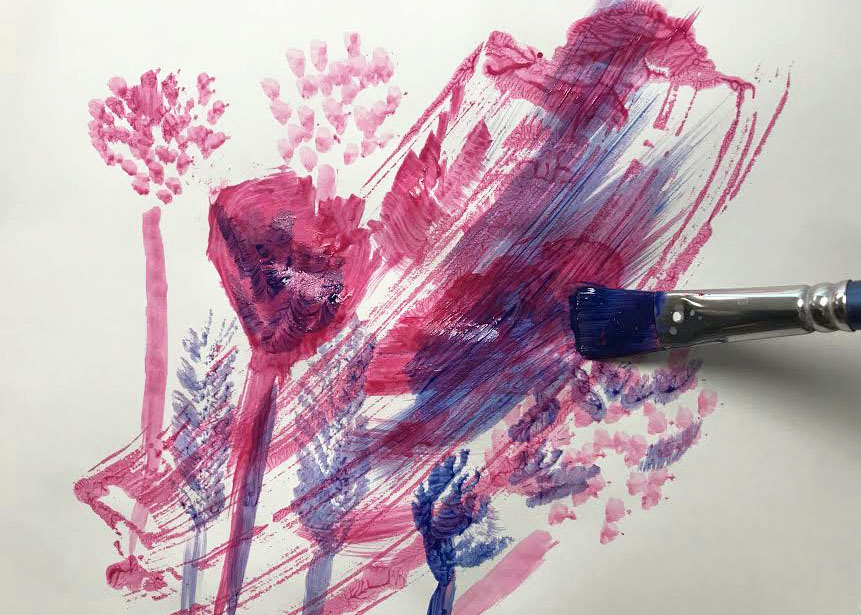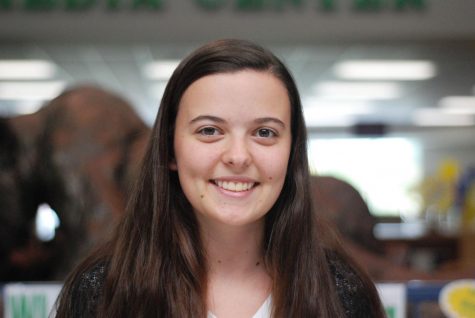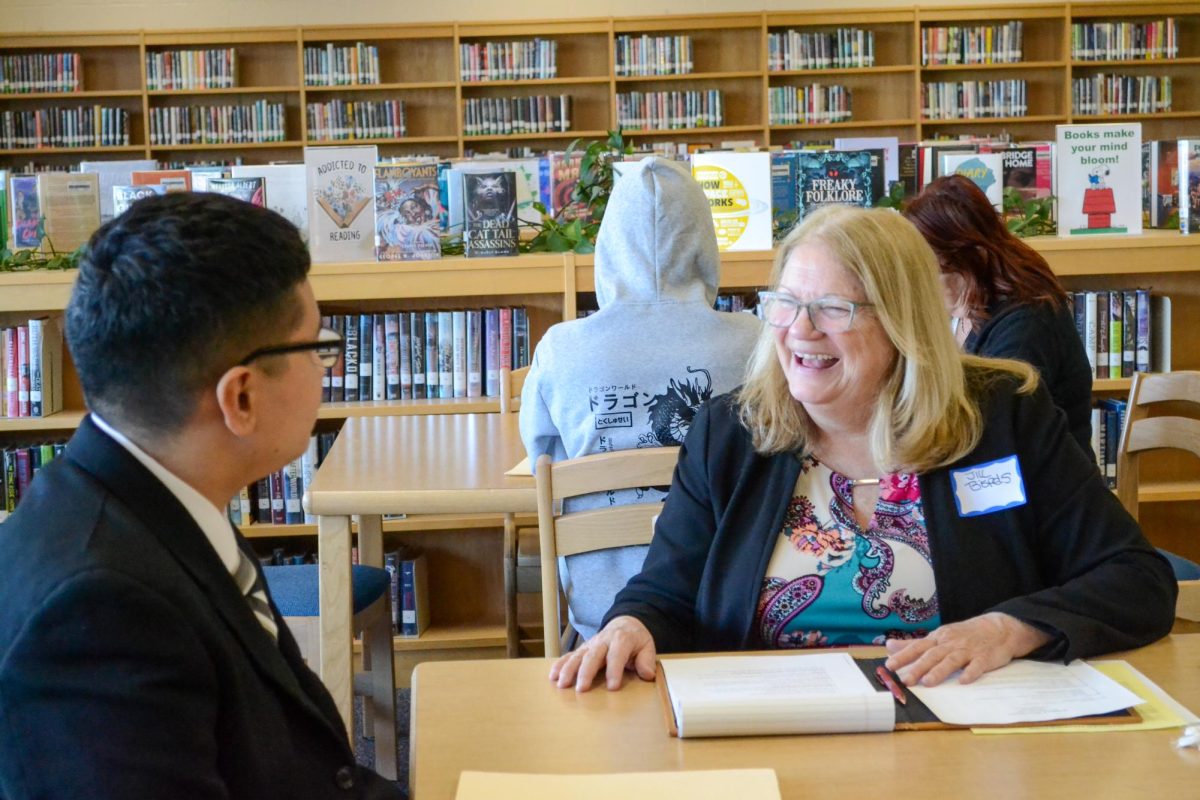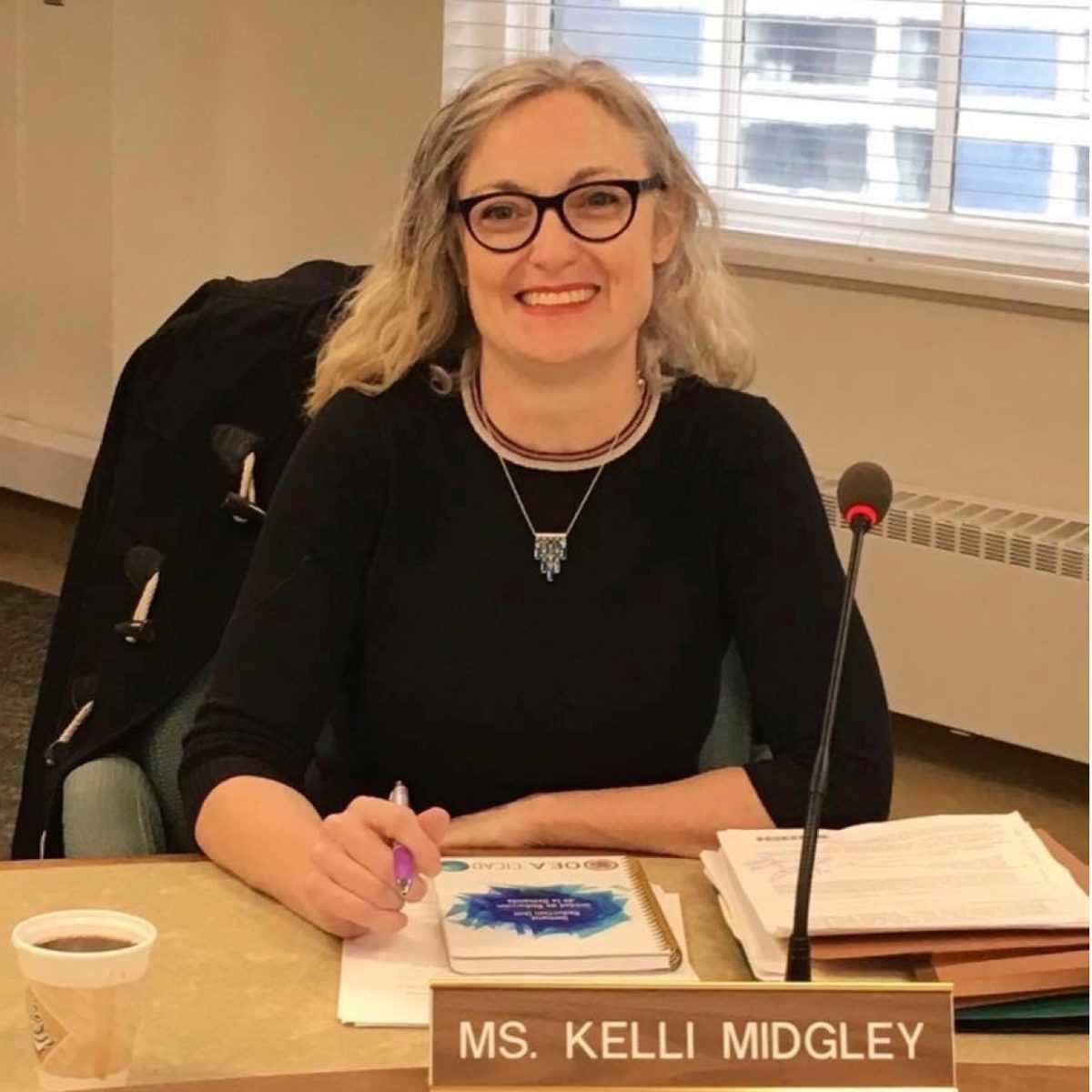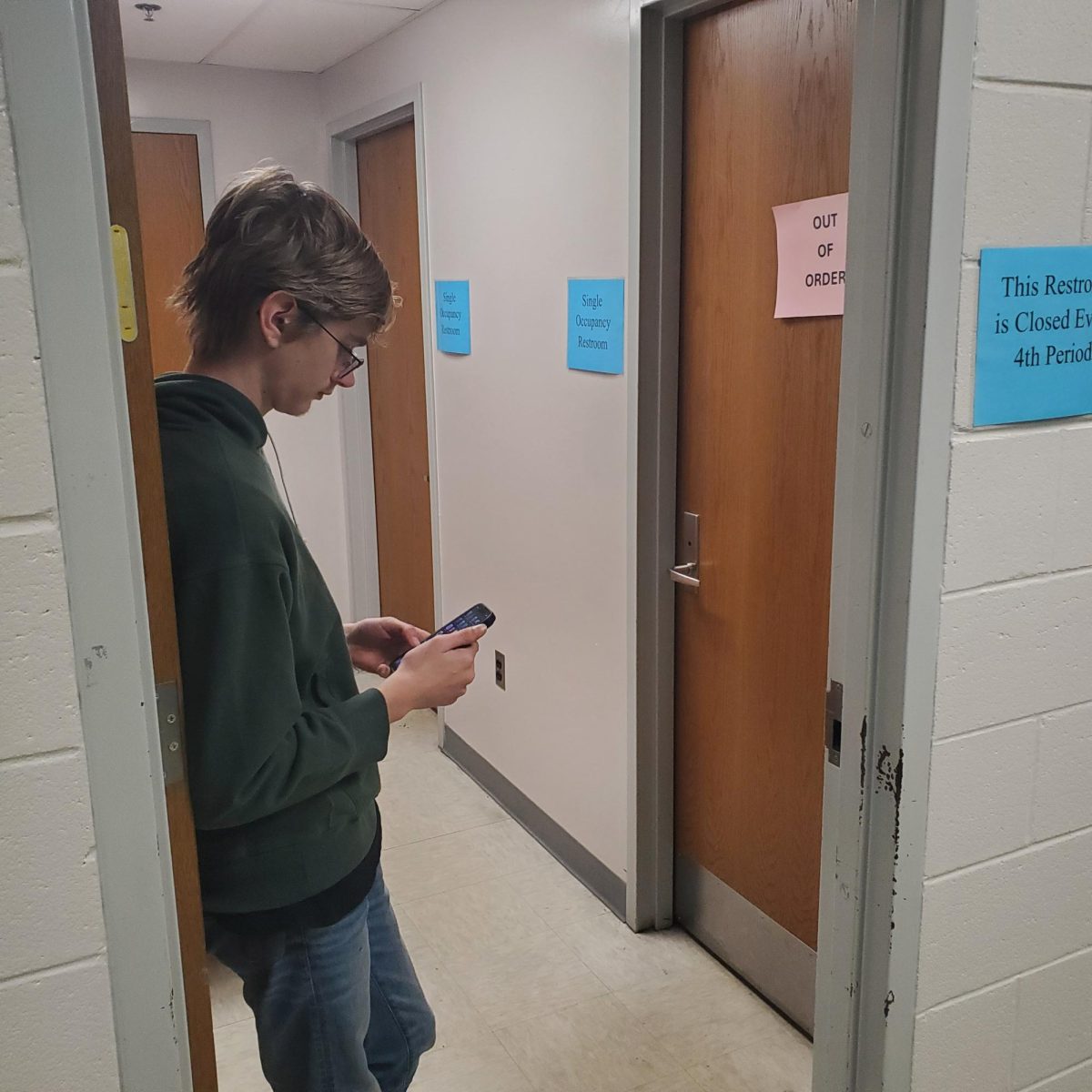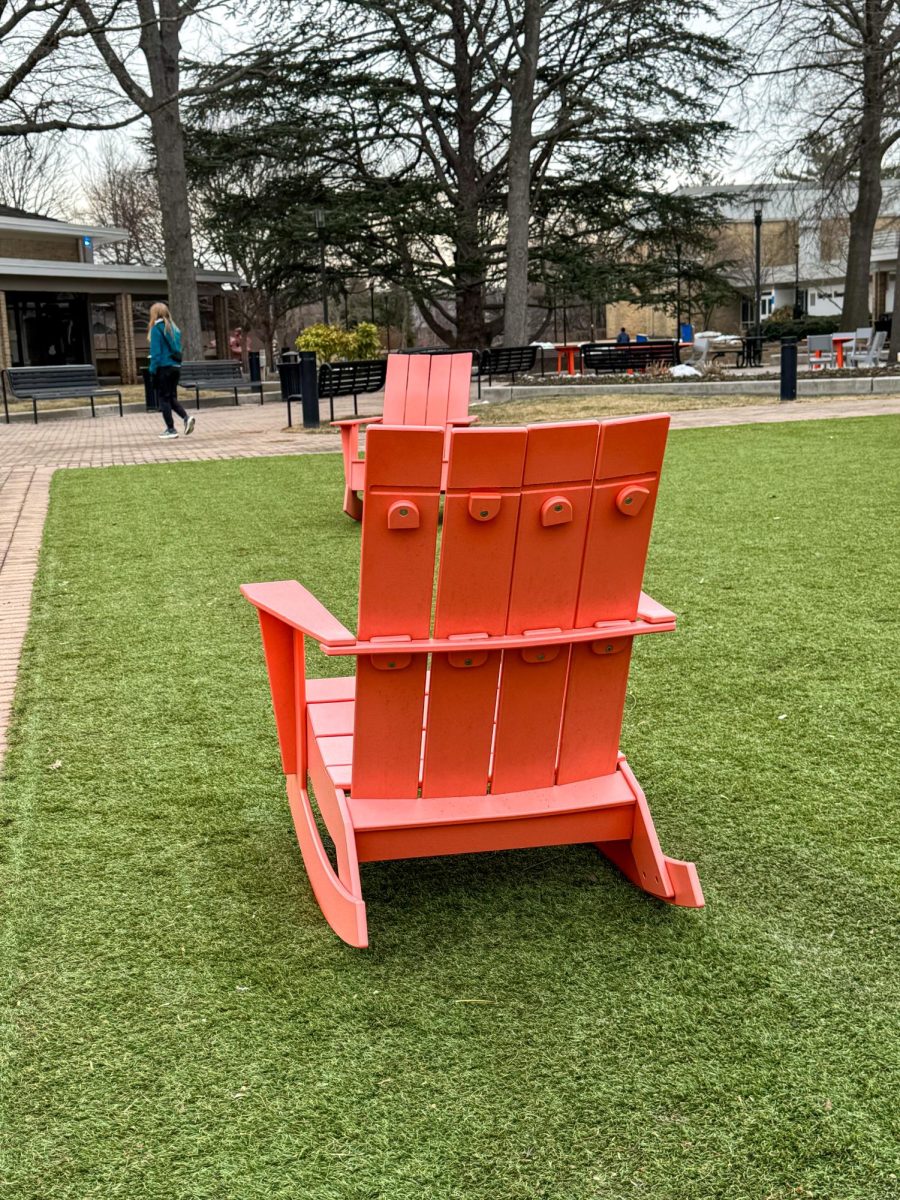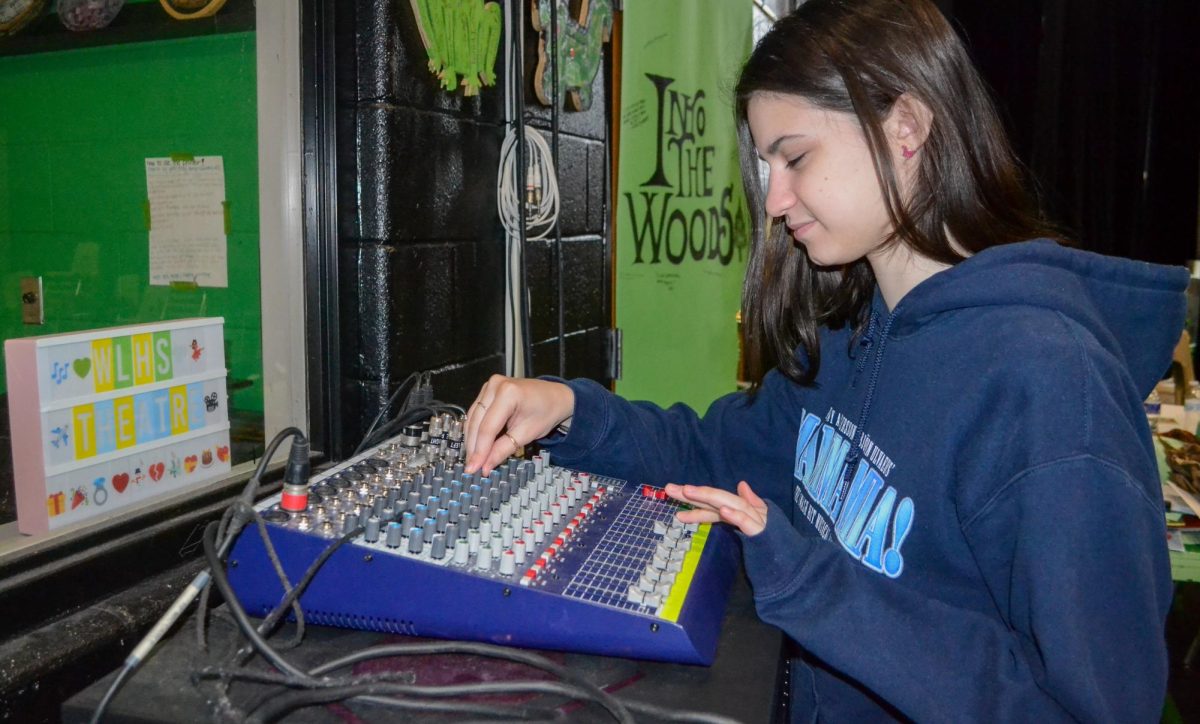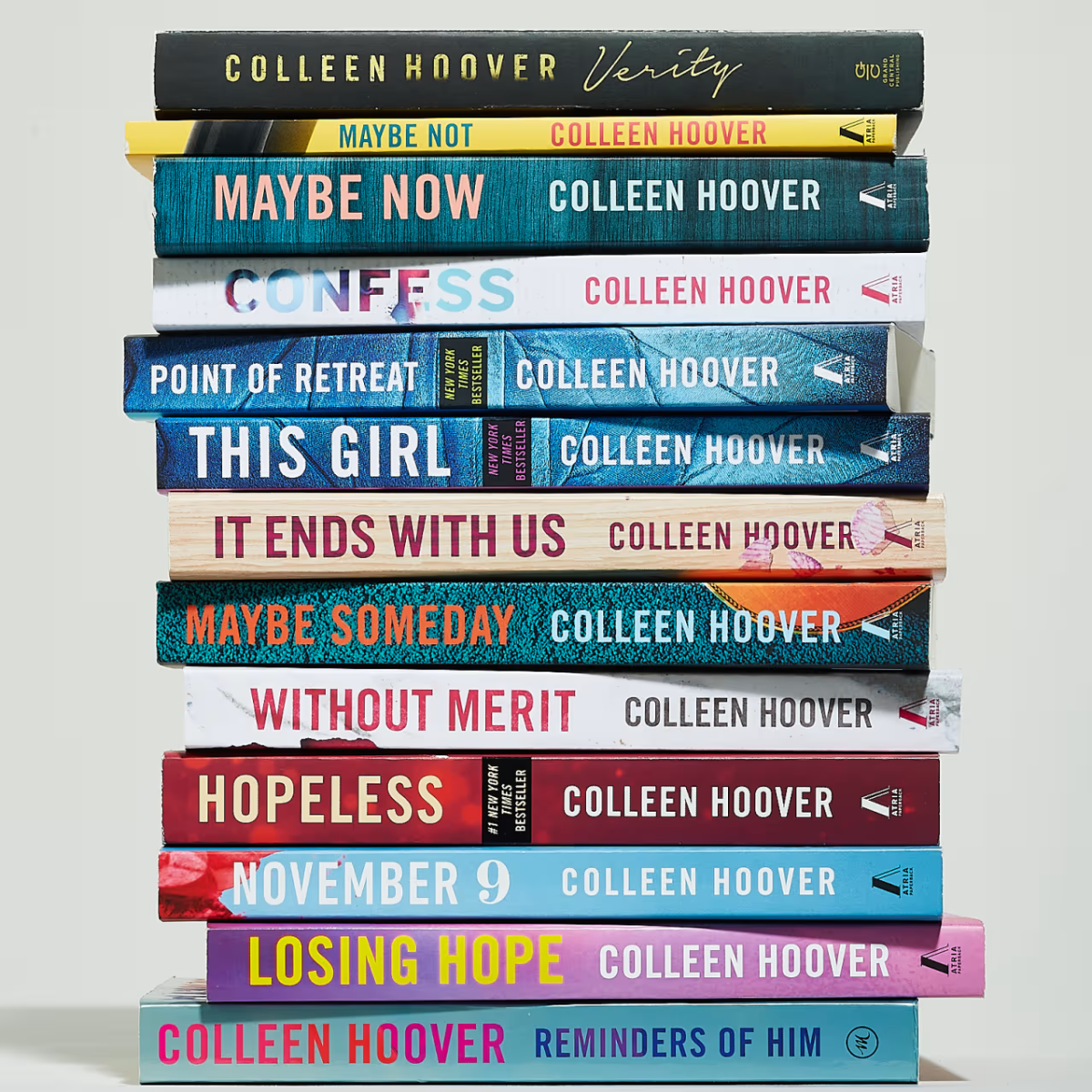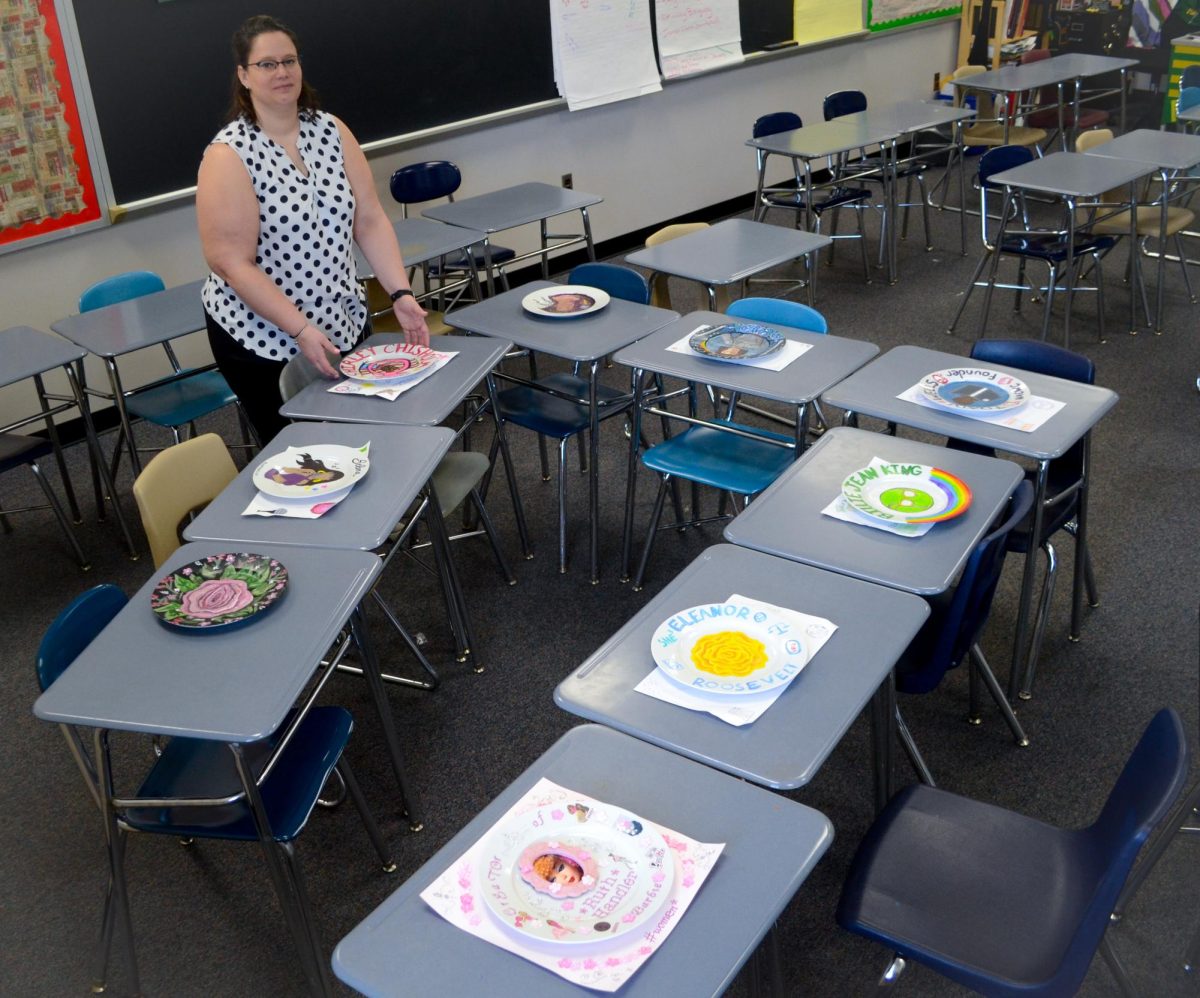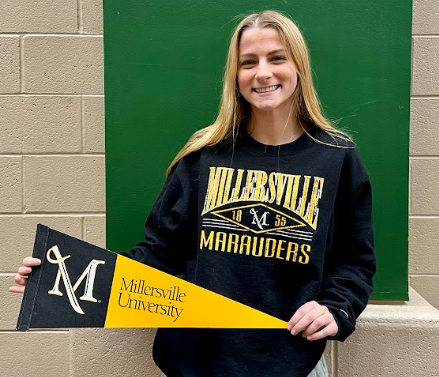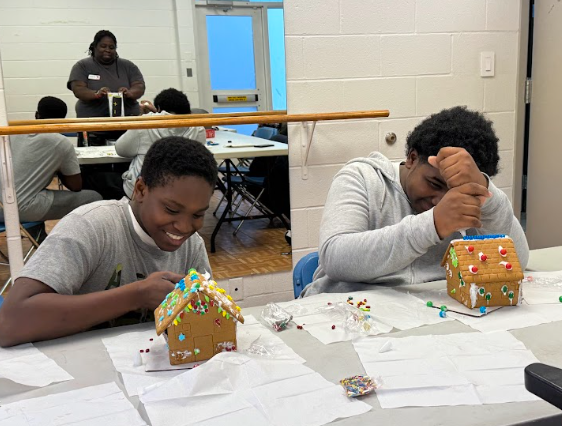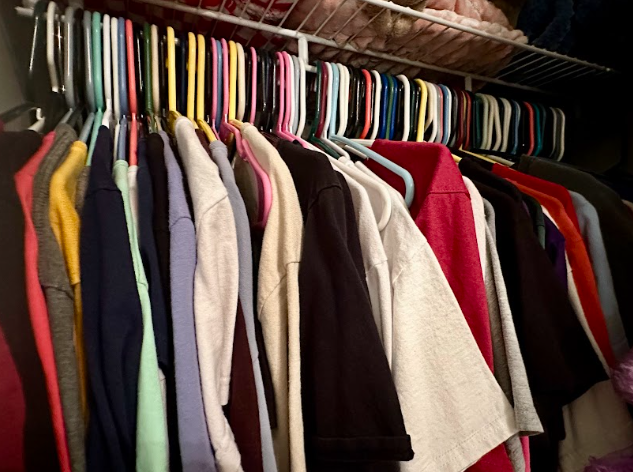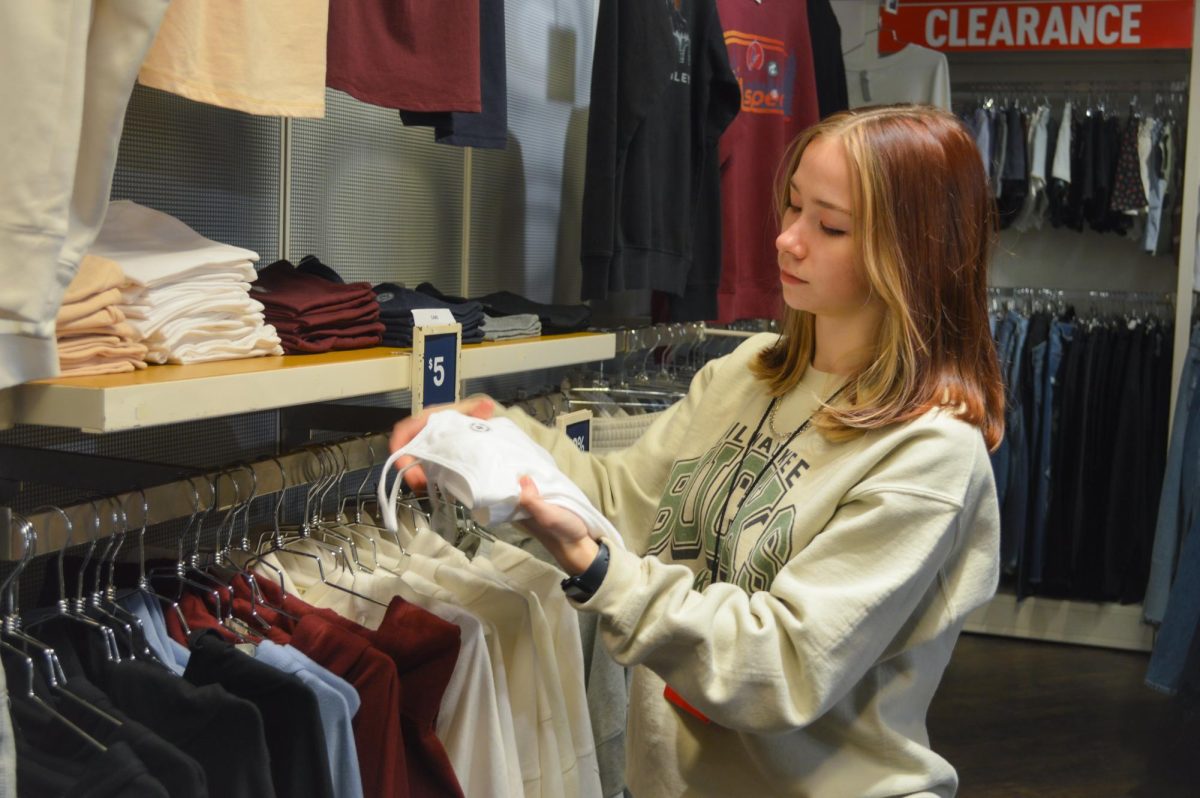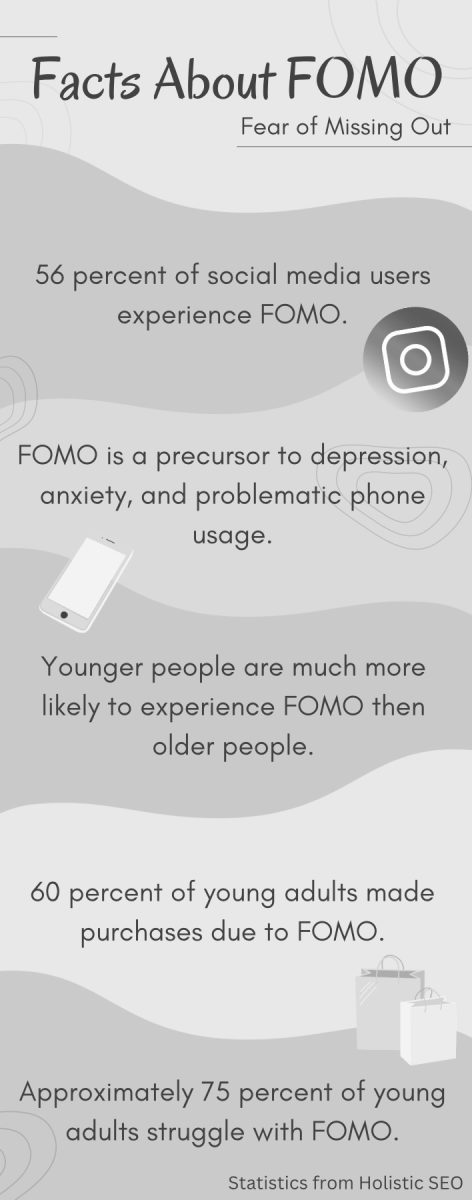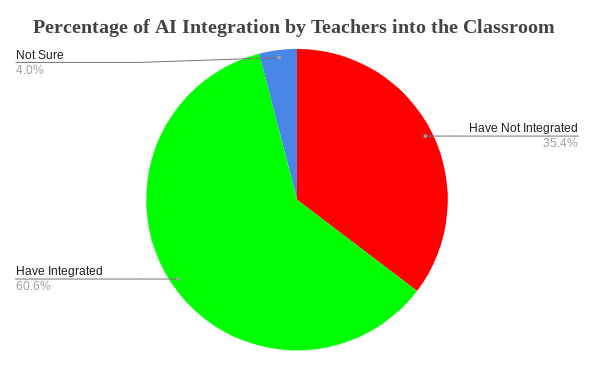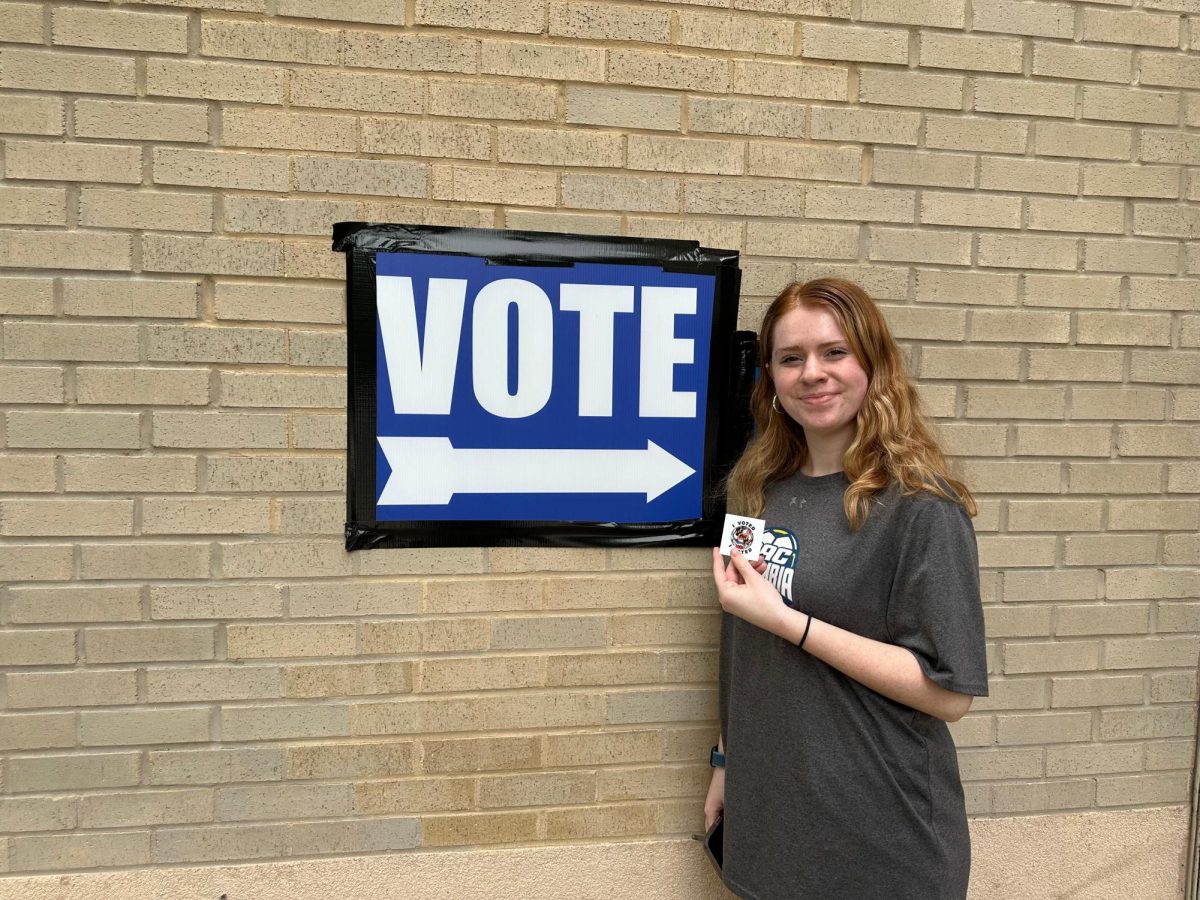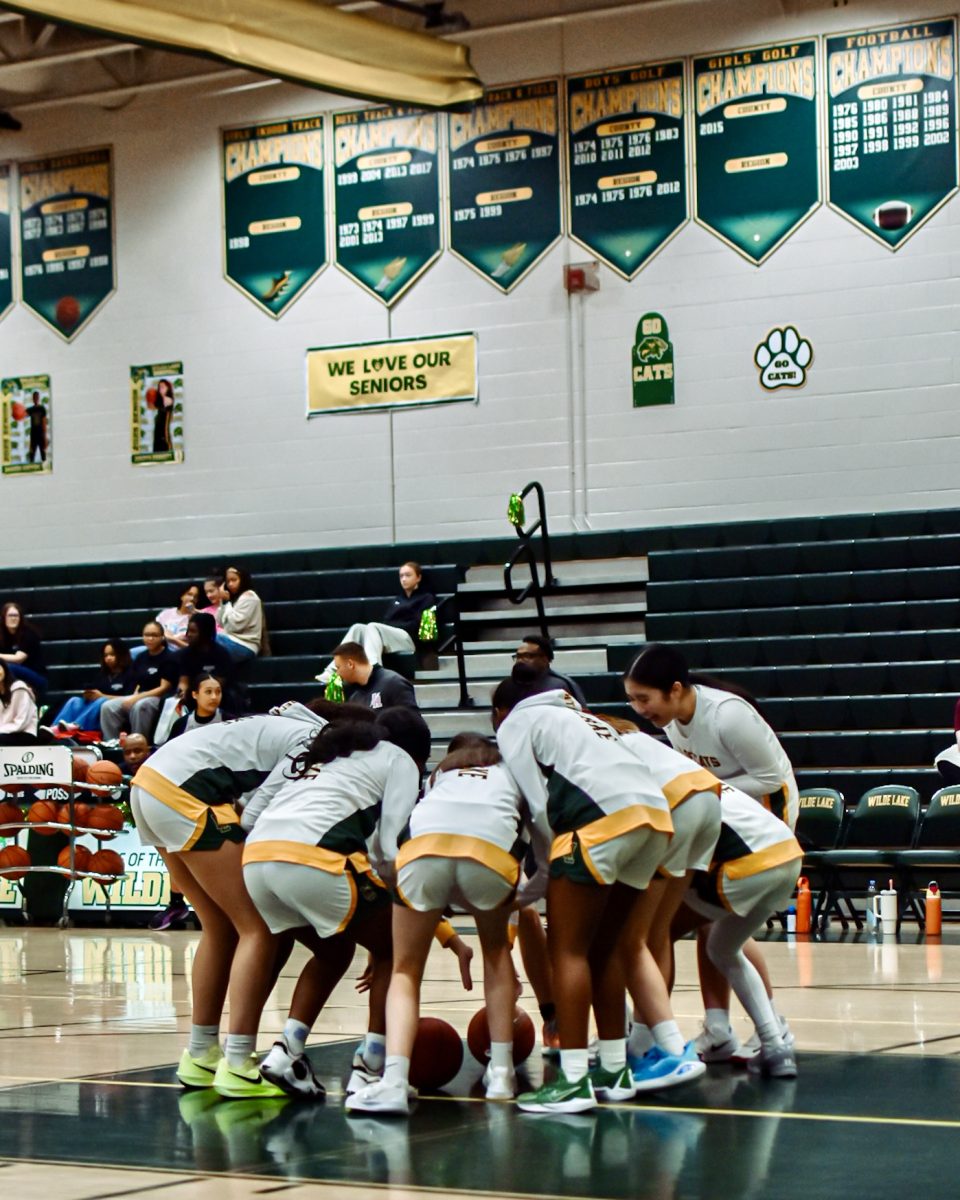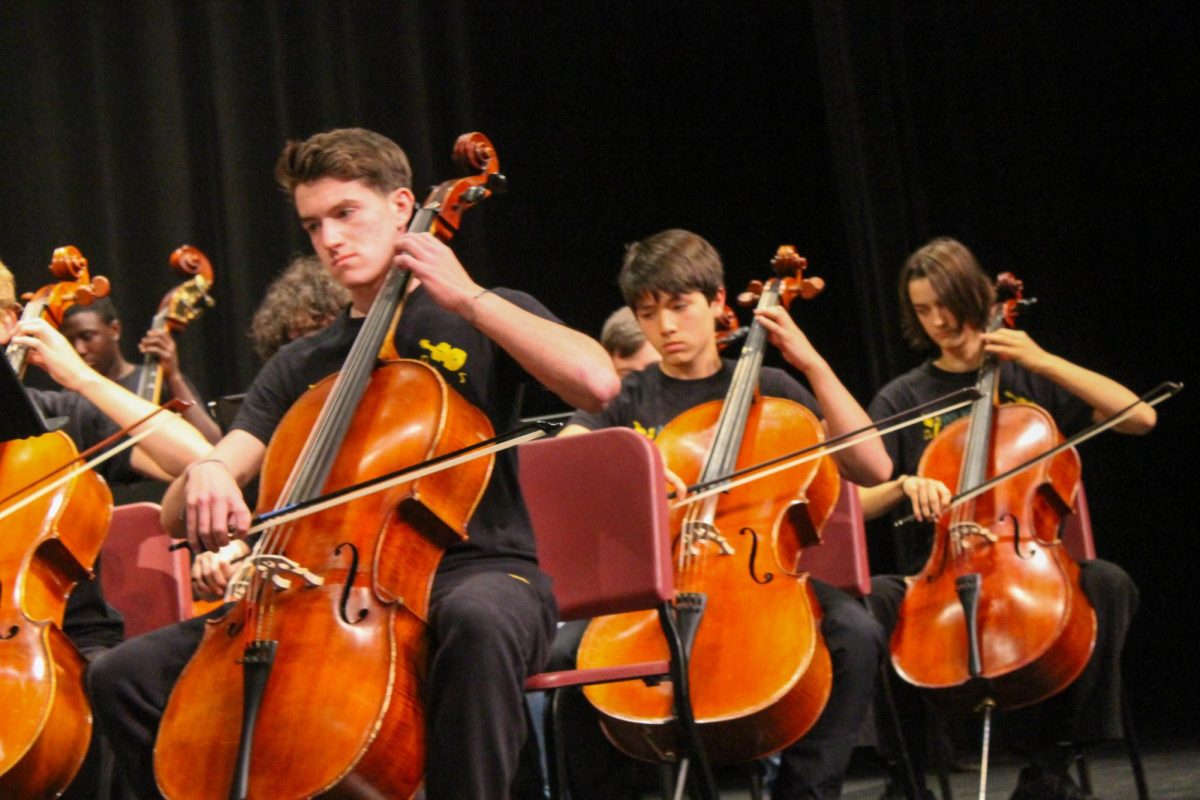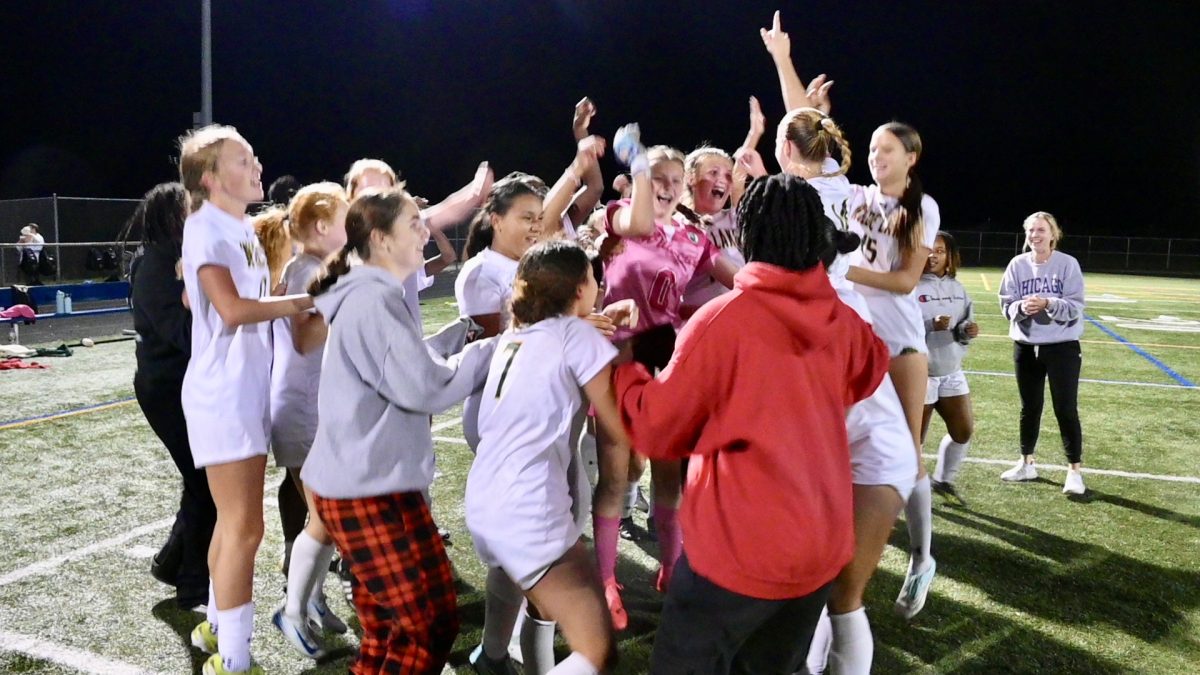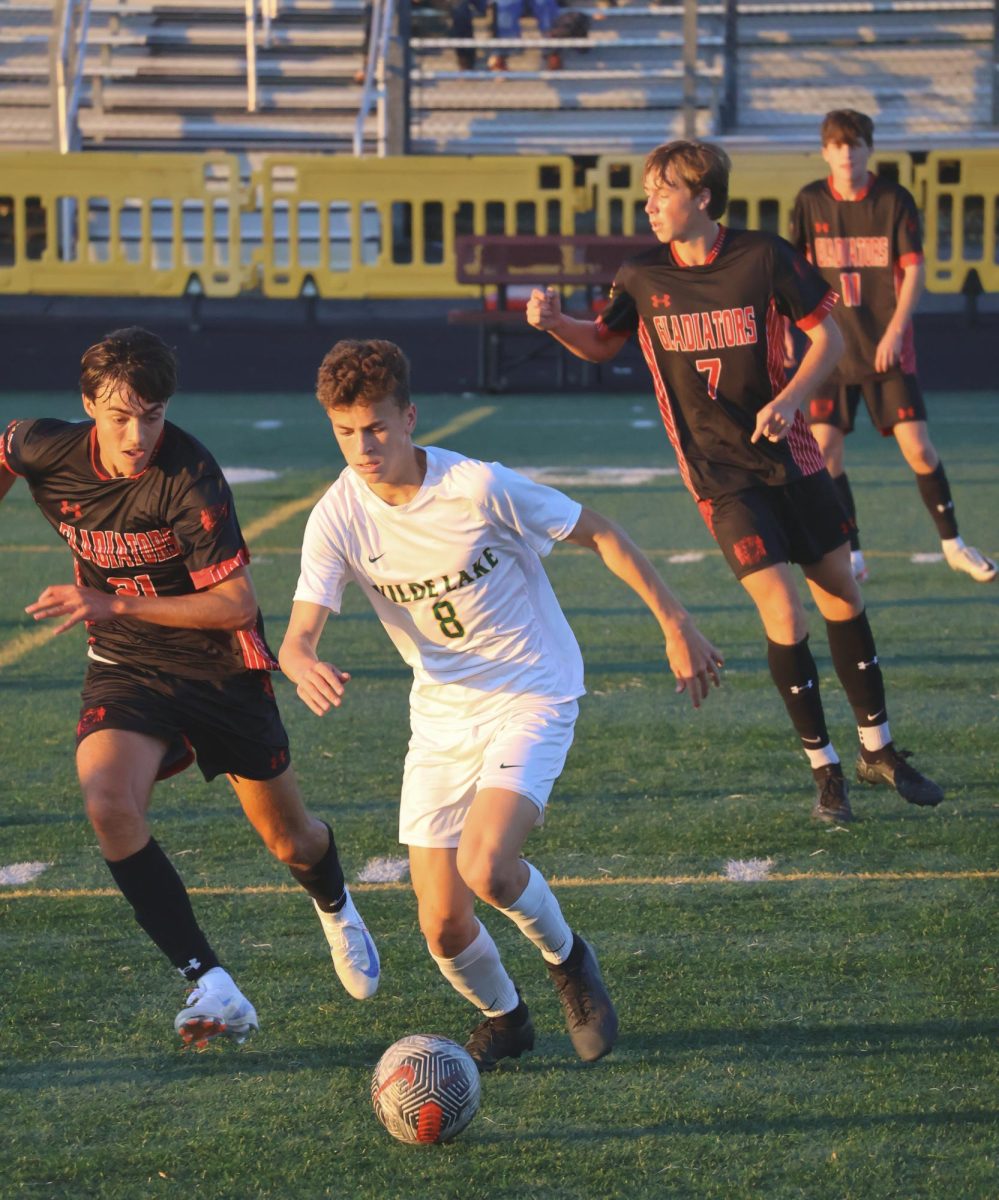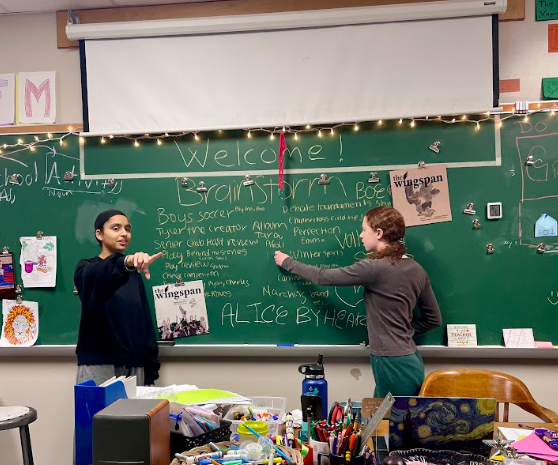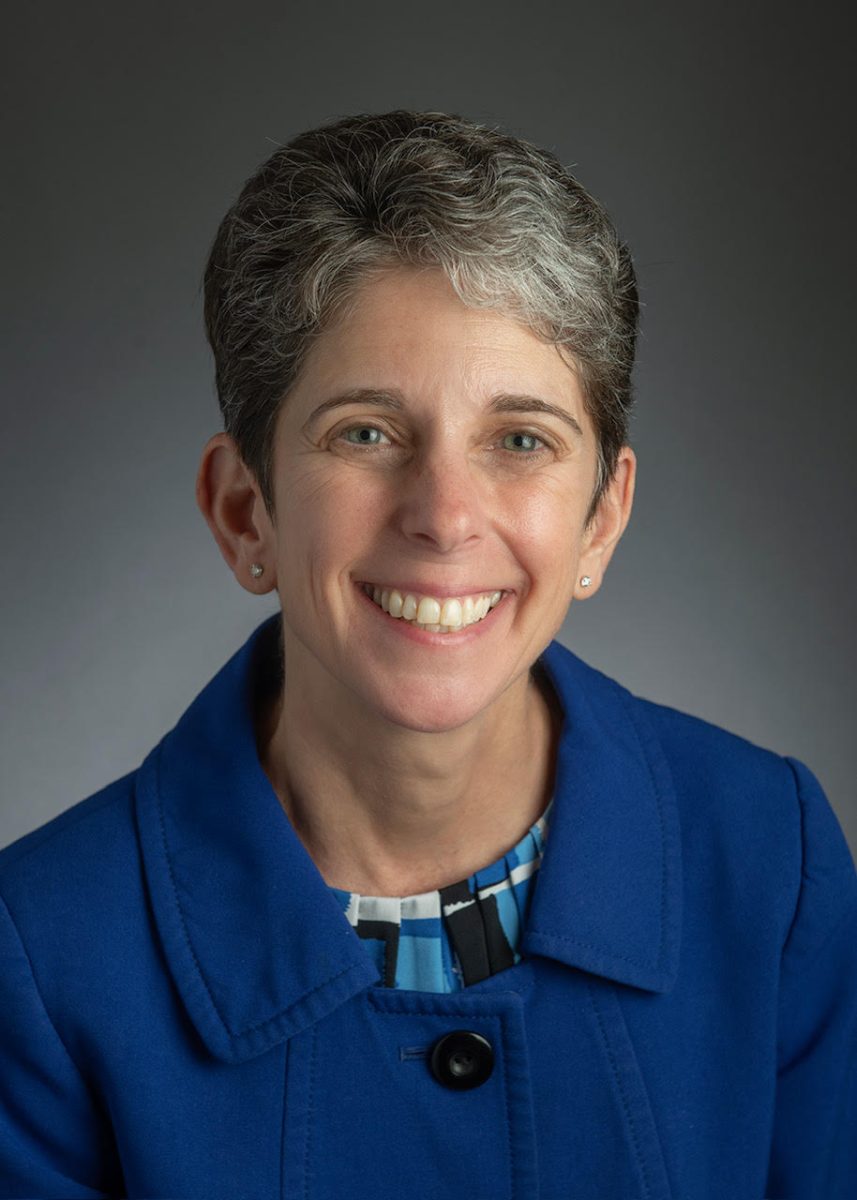Students and Alzheimer’s Residents Use Art to Close the Gap Between Generations
March 16, 2018
“We never color in the lines,” said Maya English, president of Art Honors Society, of her experience at Vantage House, where the Wilde Lake Art Honors Society pairs students and Alzheimer’s residents in a program called “Opening Minds Through Art.”
The program focuses on the process of creating abstract art to help those with Alzheimer’s access their creative side and build confidence in themselves. The original program was started in Miami University’s College of Gerontology, but a similar program was brought to Wilde Lake by one of the art teachers, Ms. Maher.
“Doing the program is a lot of fun for everyone,” said English. “ I really like talking to these people from other generations. It’s like getting a little piece of history, or having another grandparent.”
A lot of the time, English talks to her art partner about her past. The residents of Vantage House all have different backgrounds, so they all have interesting stories to tell, whether directly to English or through the abstract art they create.
English remembered a time when her partner told her about the first time she wore makeup. “The resident I was paired with noticed my eyeliner and told me I reminded her of herself when she was a teenager. She told me that the first time she tried on makeup, her dad thought she had dirt on her face and tried to wash it off.”
“It’s a lot harder for people with Alzheimer’s to create representative artwork, like a still life, but they still have the same creative capability as everyone else,” said English.
“I work with them to access their creative sides, but I’m not allowed to do any art for them. I can wash brushes and do things just to assist them, but the artwork they create is all their own.”
Research shows that art is able to help those with Alzheimer’s to feel in control when they otherwise might not. “We have to give them decisions, because if we offer them too many paint colors, they might get overwhelmed,” said English.
Before going, all students involved had to attend a three hour training session, where they learned about the neuroscience behind Alzheimer’s and how to treat residents who have Alzheimer’s.
“I like doing artwork and being around art, and I feel like this is a good way to make art and help people at the same time,” said English. “The gap between generations seems a lot smaller when it’s bridged by art.”





